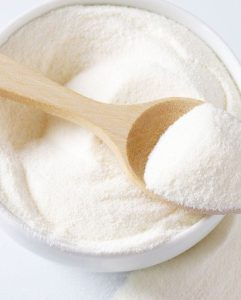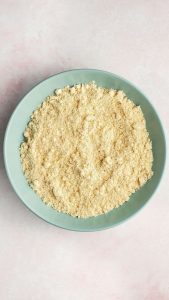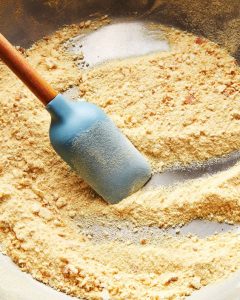Malted milk powder adds a unique flavor and texture to many desserts. But what if you run out or can’t find it at the store? Fear not, baking enthusiast! There are several delicious substitutes that can be used in its place. This article explores substitutes for malted milk powder in baking and other uses.
Malted milk powder is a sweet, malty powder made from evaporated cow’s milk, malted barley, and wheat flour.
Substitutes for Baking
When looking for a substitute, consider the role malted milk powder plays in your recipe. Does it add sweetness? A malty flavor? Or both? Here are some options depending on your needs:
Sweetener and Flavor:
-
- Cocoa powder and brown sugar: Combine equal parts unsweetened cocoa powder and brown sugar to mimic the chocolatey, malty flavor. This works well in brownies, cookies, and cakes.
- Milo: This chocolate malt beverage powder is a readily available substitute with a similar flavor profile. Use the same amount of Milo as you would malted milk powder.
Horlicks: Another malted milk beverage powder option, Horlicks offers a malty flavor with a hint of caramel. Use the same amount as malted milk powder.
Sweetener:
-
-
- Powdered sugar: If you only need the sweetness of malted milk powder, powdered sugar can be used in a 1:1 substitution. However, it won’t add any malty flavor.
- Granulated sugar: Granulated sugar can also be used as a 1:1 substitute for sweetness, but it won’t add the malty flavor or texture.
-
Flavor:
-
- Malt extract: Malt extract is a thick syrup derived from malted barley. It adds a strong malty flavor without the sweetness of malted milk powder. Use half the amount of malt extractcompared to malted milk powder.
- Instant coffee: Believe it or not, a small amount of instant coffee can add a subtle malty depth to baked goods. Start with ¼ teaspoon per cup of flour and adjust to taste.

These substitutes are starting points. You might need to adjust the amount or experiment with different combinations to achieve the desired flavor and texture in your recipe. Be sure to taste-test your batter or dough before baking to make sure you’re happy with the results.
Substitutes for Other Uses
Malted milk powder isn’t just for baking! Here are some substitutes depending on how you’re using it:
- Frosting: If your recipe calls for malted milk powder in frosting, you can use a combination of cocoa powder and powdered sugar as a substitute.
- Milkshakes: Chocolate syrup or a chocolate malt beverage powder like Milo or Horlicks can be used to replicate the malty chocolate flavor in milkshakes.
- Savory Dishes: Malted milk powder is sometimes used in savory dishes for a umami flavor. Nutritional yeast or a sprinkle of soy sauce can add a similar savory depth.
With a little creativity, you can find a suitable substitute for malted milk powder. So next time you’re missing this ingredient, don’t fret! There’s a delicious solution waiting to find in your pantry.
 Exploring Alternative Ingredients
Exploring Alternative Ingredients
Malted milk powder adds a unique layer of flavor and texture to recipes. When it’s not available, several substitutes can achieve similar results. Here are some additional options to consider:
-
For a Nutty Twist:
- Almond flour: Almond flour can add a nutty sweetness and a slightly different texture compared to malted milk powder. You might need to adjust the amount of other flours in your recipe to compensate for the change in texture. Start with a 1:1 substitution and adjust to taste.
- Coconut flour: Coconut flour is another option for a nutty flavor and a denser texture. However, it’s very absorbent, so you’ll likely need to use less and add more moisture to your recipe. Start with ¼ cup of coconut flour for every 1 cup of malted milk powder and add more liquid as needed.
-
Spices for Depth:
- Vanilla extract and a pinch of cinnamon: This combination can add a warm, slightly sweet flavor profile reminiscent of some malted milk powder uses. Start with ½ teaspoon of vanilla extract and a pinch of cinnamon per cup of flour and adjust to taste.
- Nutmeg and cardamom: These spices can add a complex warmth and depth of flavor, particularly in cookies or cakes. Start with a quarter teaspoon each of nutmeg and cardamom per cup of flour and adjust to taste.
 Finding the Perfect Match
Finding the Perfect Match
The ideal substitute depends on the specific role malted milk powder plays in your recipe. Consider these factors when choosing:
- Sweetness: Does the malted milk powder add sweetness or is it primarily for flavor?
- Texture: Does the recipe rely on the malty milk powder for a specific texture, like a cake’s fluffiness?
- Flavor Profile: Are you looking to replace the malty flavor entirely, or can you achieve a similar taste with alternative ingredients?
Experimenting with different substitutes and combinations can be a fun way to discover new flavor profiles in your baking.
Beyond Baking Substitutes
Malted milk powder isn’t just for baked goods! Here are some ideas for substituting it in other uses:
- Frosting: If your frosting recipe calls for malted milk powder, you can use a combination of cocoa powder and powdered sugar for a similar chocolatey taste.
- Milkshakes: Chocolate syrup or a chocolate malt beverage powder can be used to replicate the malty chocolate flavor in milkshakes.
- Savory Dishes: Nutritional yeast or a sprinkle of soy sauce can add a similar savory depth.
With a little resourcefulness, you can find a suitable substitute for malted milk powder. Don’t be afraid to experiment with different ingredients and discover new flavor combinations in your baking adventures!

Additional Options for Bakers
Here are some more substitute ideas to keep in mind:
- For a chocolate malt flavor: Try using chocolate malt beverage powder, like Milo or Horlicks.
- For a nutty twist: Almond flour or coconut flour can add a unique twist in terms of flavor and texture.
- For a touch of spice: Vanilla extract with a pinch of cinnamon or nutmeg and cardamom can add depth of flavor.
By understanding the role of malted milk powder and experimenting with substitutes, you can create delicious baked goods without needing the exact ingredient.

